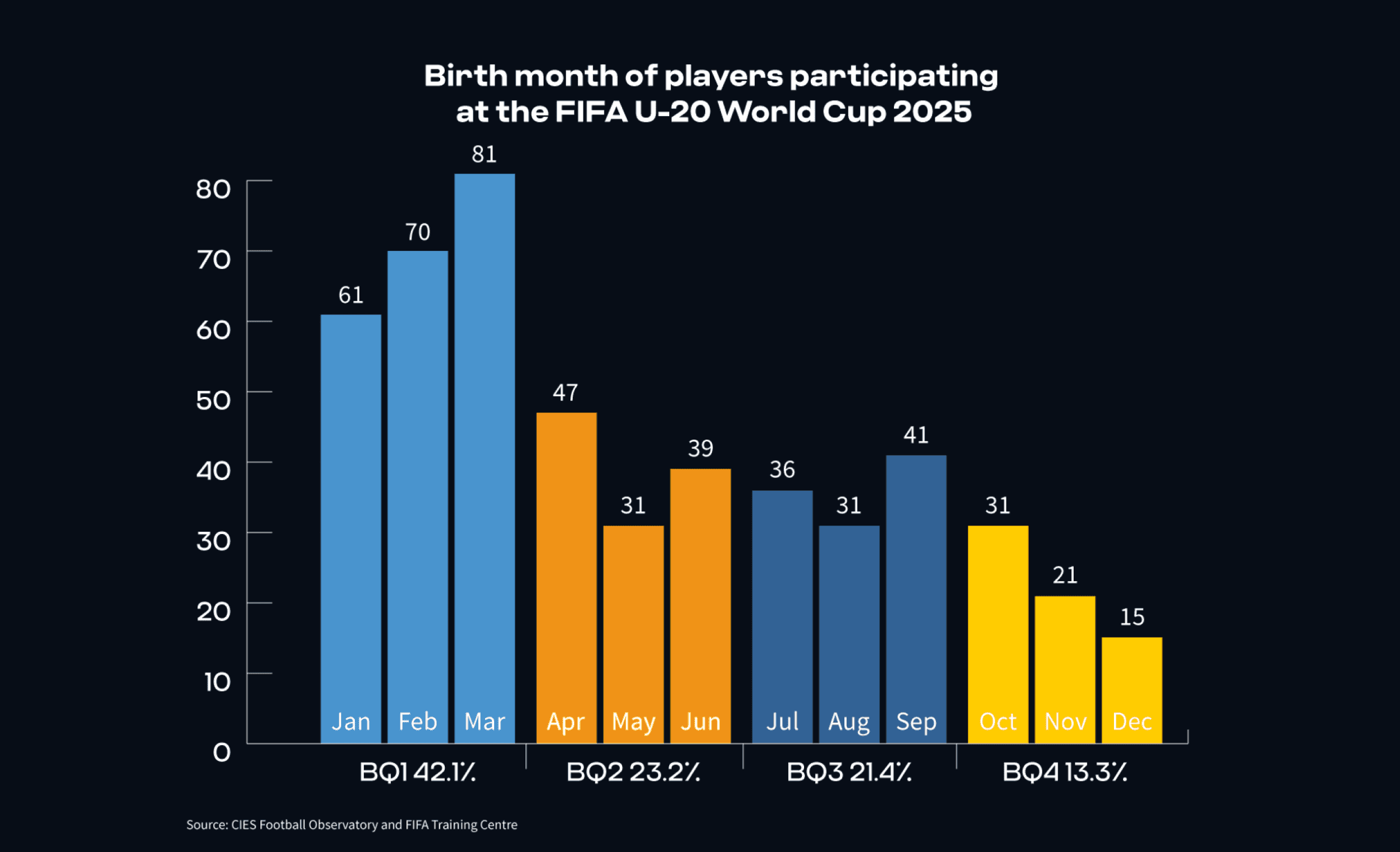A study conducted after the last FIFA U20 World Cup (held in Chile and won by Morocco) once again demonstrates the importance of the quarter of birth for young players. The analysis, carried out jointly by the FIFA Technical Centre and CIES (the International Centre for Sports Studies), indicates that 42.1% of the 504 players who participated in the tournament were born between January and March. This percentage should be compared to the 13.3% of young players born in the last quarter (see elsewhere). The authors of the study explain: “This result is explained by the fact that footballers born between October and December have less chance of being selected by top clubs and national youth teams, which limits their opportunities to train, play, and progress at the highest level.” Conversely, this benefits older players, particularly those born between January and March, who have better access to training and competition, and consequently progress more quickly.
42.1% of players were born in the first quarter, and 13.3% in the last. Despite increased awareness, the age-related effect (ARE) persists.
Not exactly a revelation, then, but surprising considering that this common phenomenon is now taken into account by scouts, recruiters, and other technical staff within federations. Nevertheless, the age-related effect (ARE) remains. And this trend even seems to be intensifying, as a comparison with the previous edition shows that the proportion of those born in the first quarter has climbed by nearly 6 points (36.7% in 2023 compared to 42.1% in 2025), while the percentage of young people born in the last quarter has decreased (16.7% in 2023 compared to 13.1% in 2025). When contacted, Pierre-Yves Bodineau, the former director of the PSG Academy, explained: “Maturity is an essential ingredient in a player’s success. It is therefore quite clear that the quarter of birth influences how we perceive a player, both at club level and in the U16 to U20 national teams. Today, young players are ready earlier and earlier, but this difference in maturity persists for players from the same generation.” Aside from setting up competitions and talent identification programs that bring together young players born in the same semester, I don't really see any solutions to counter this biological and chronological reality. The positive point is that this advantage for older players fades and diminishes over time. An undeniable argument, but one that won't console all those young players who were dropped from the ranks simply for having the misfortune of being born in December…

